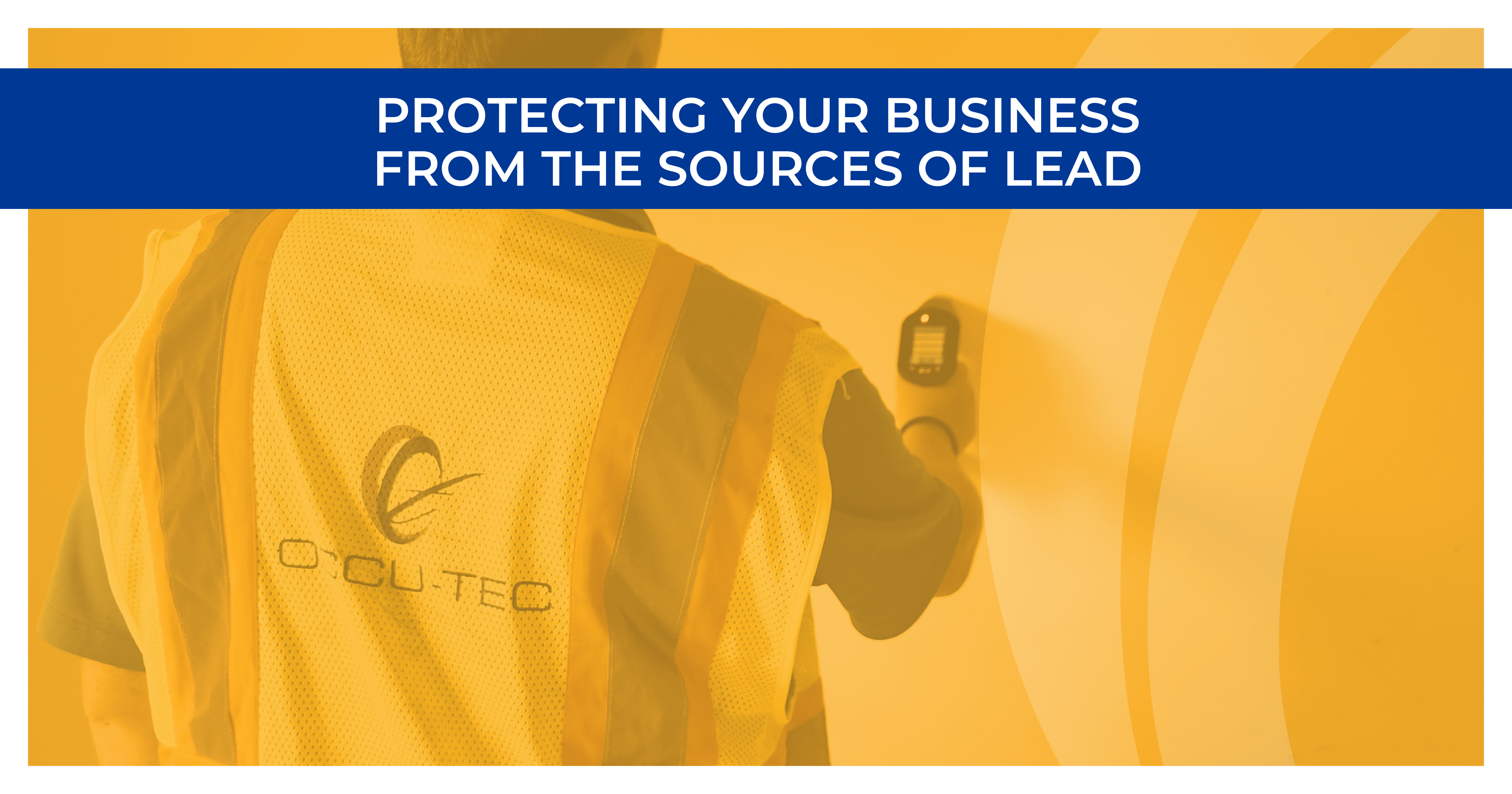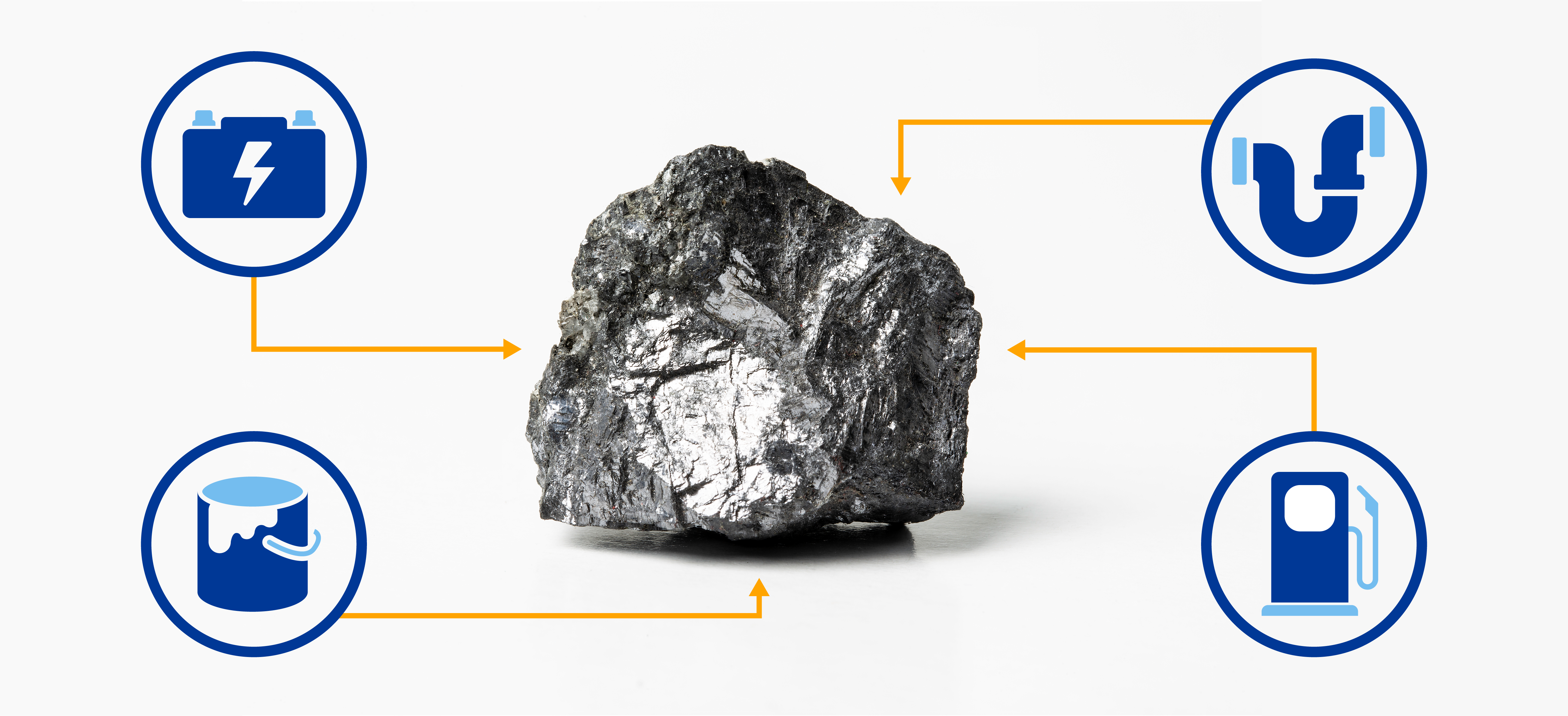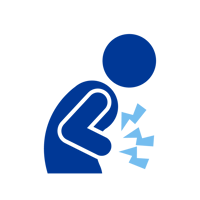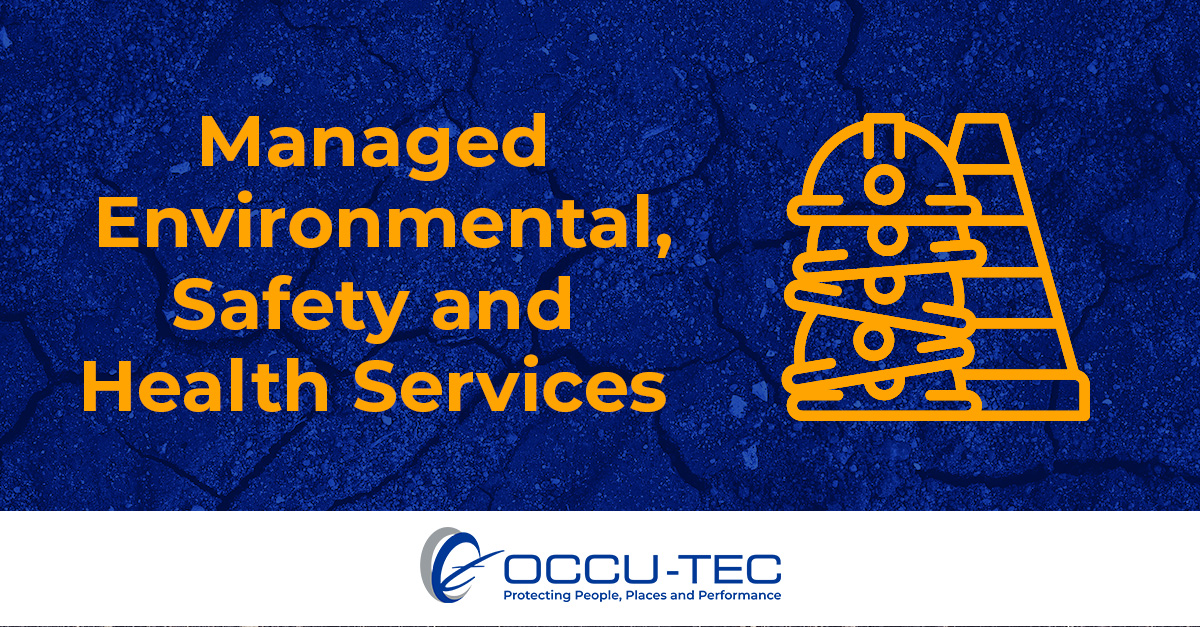
Watch out for a hidden danger in your workplace – lead, a harmful metal. Lead poisoning is a big threat to your business and the health of people inside, potentially causing serious health problems.
Regular assessments are crucial to identify potential risks of lead. If found, swift action is necessary to prevent further exposure. In this blog, we'll explore how to protect your business from this covert threat.
What's Inside?
- What is lead?
- Where does lead exposure come from?
- The dangers of lead poisoning
- How does lead get into the body?
- Lead's impact on your business
- Lead prevention strategies
- Employee training and awareness
- Compliance with environmental regulations
Understanding Lead
Understanding the background of lead is crucial to safeguarding your business from potential risks. Let’s dive into some basics.
What Is Lead?
Lead is a toxic metal known for harming the brain, kidneys, and reproductive system. It has a dull gray color, and when exposed to air, it forms a coating. Widely used in industries for years, lead is found in items such as paint, batteries, and pipes and was once used in gasoline.
It's also used in X-ray shields due to its heavy nature that blocks radiation. Despite its useful properties, it's important to be cautious of lead's dangers and take preventive measures to avoid exposure.
Lead Quick Facts |
|
|
|
|
|
|
Where Does Lead Exposure Come From?
Understanding where lead comes from can help us avoid unnecessary exposure and keep our environments safe:
-
Natural Sources: Some lead is naturally present in the Earth's crust. When rocks break down over time, small amounts of lead can end up in the soil. This means that in some areas like southern Missouri and Kansas, the ground might naturally have lead contamination. These areas were heavily mined for their lead to be used in industrial manufacturing often leading to further contamination and in some cases death of entire towns, as was the case with Picher, Oklahoma, now dubbed “America’s most toxic ghost town.”

-
Industrial and Manufacturing Processes: Industries use lead in various processes, like making batteries, pipes, vinyl plastics, paints, ceramics, and plating operations. When these products are made or used, they can release lead into the air or water, contributing to environmental exposure.
-
Historical Use in Construction: In the past, lead was commonly used in construction, especially in things like paint, pipes, and flashings. Houses and buildings built before 1978 may have lead-based paint, while piping, faucets, fixtures, and solder used in new construction were not required to be “lead-free”* until 1986, which can still be a concern today.
-
Hobbies: Lead is commonly used in hobbies enjoyed by all walks of life. These hobbies might include making stained glass, pottery, fishing weights, or reloading ammunition.
* Section 1417 of the Safe Drinking Water Act (SDWA) establishes the definition for “lead free” as a weighted average of 0.25% lead calculated across the wetted surfaces of a pipe, pipe fitting, plumbing fitting, and fixture and 0.2% lead for solder and flux.
The Dangers of Lead Poisoning
Lead exposure can harm health, especially in kids and pregnant women. Kids may face developmental delays, and cognitive and behavioral issues, while pregnant women might experience miscarriage. Preventing lead poisoning is vital, involving strong regulations, regular testing, and remediation efforts.
Symptoms of Lead Poisoning
Lead poisoning is a serious health issue, especially for kids younger than six. The toxic metal can enter the body through inhalation, ingestion, or skin absorption. Let's explore the symptoms, causes, and long-term effects of lead poisoning.
Physical Symptoms
-
Abdominal Pain and Cramping: Discomfort and pain in the stomach area.

-
Fatigue and Weakness: Persistent tiredness and lack of energy.
-
Headaches and Migraines: Recurrent and severe head pain.
-
Joint Pain and Stiffness: Aching joints and difficulty in movement.
-
Loss of Appetite: Reduced desire to eat.
-
Nausea and Vomiting: Feeling sick and vomiting.
-
Seizures: Sudden, uncontrolled movements or convulsions.
-
Weight Loss: Unintended and significant loss of body weight.
Behavioral Symptoms
-
Aggressive Behavior: Hostile and confrontational conduct.

-
Anxiety and Irritability: Feeling uneasy and easily provoked.
-
Depression: Persistent feelings of sadness and hopelessness.
-
Difficulty Concentrating: Struggling to focus or pay attention.
-
Hyperactivity and Impulsivity: Excessive movement and acting without thinking.
-
Learning Disabilities: Challenges in acquiring and processing information.
-
Mood Swings: Unpredictable and abrupt changes in emotions.
-
Sleep Disturbances: Problems with falling asleep or staying asleep.
Long-Term Effects
-
Anemia: A condition where there's a shortage of red blood cells to carry oxygen.

-
Brain Damage: Harm to the brain that can lead to various cognitive impairments.
-
Damage to the Nervous System: Impacts on the nerves affecting sensory and motor functions.
-
Kidney Damage: Impaired kidney function due to prolonged lead exposure.
-
Reduced Fertility: Decreased ability to conceive or father children.
-
Severe Developmental Delays: Significant delays in physical or mental growth.
-
Speech and Language Problems: Impairments in communication abilities.
-
Weak Bones: Decreased bone density and strength.
How Does Lead Get into the Body?
Here are some ways lead can enter the body, posing potential health risks:

|
Inhalation: Lead in dust, soil, or fumes from sources like leaded gasoline, burning candles with lead-cored wicks, and industrial processes can be breathed in. |

|
Ingestion: Children can ingest lead through paint chips, dust, or by putting lead-containing objects in their mouths. Lead may also be ingested through contaminated drinking water, dishware, folk medicines, cosmetics, and foods such as spices or contaminated fish and wild game. |

|
Dermal Exposure: Absorption through the skin is not as common now that we do not use leaded gasoline. Absorption typically impacts workers who are working with organic lead compounds such as tetraethyl lead. |
Lead's Impact on Your Business
If your business uses lead in any way, it is important to ensure that proper safety measures are taken to prevent any negative effects, including:
|
Increased Employee Absences and Decreased Productivity |
Despite Occupational Safety and Health Administration (OSHA) regulations aimed at safeguarding employees from workplace lead exposure, some individuals may still face dangerous levels, resulting in health issues that lead to increased absenteeism and decreased productivity. |
|
Connection Between Lead Exposure and Health Issues |
Lead exposure has been linked to a variety of health issues, including neurological deficits and developmental delays in children, abdominal pain, and anemia. The effects of lead exposure can vary depending on the amount and duration of exposure, as well as individual susceptibility. |
|
Decrease in Overall Productivity |
When employees are absent or unable to perform their job duties due to lead exposure, employers may experience increased costs related to lost productivity, overtime expenses to cover absences, and increased healthcare costs for affected employees. |
Workers’ Compensation Liability
Workers' compensation liability laws are in place to ensure that employers provide compensation and support to employees who are injured or become ill due to their work environment. If your business fails to comply with these laws, it could result in costly lawsuits and damage to your reputation.
Legal implications and financial consequences of lead-related health issues include:
-
OSHA Regulations: OSHA sets strict standards for workplace safety, including regulations surrounding lead exposure. Failure to comply with these regulations can result in fines and penalties.
-
Workers' Compensation Claims: If an employee experiences lead-related health issues while on the job, they may be entitled to workers' compensation benefits. Failure to provide these benefits could result in lawsuits and legal fees.
-
Lawsuits: If your business is found to be negligent in protecting employees from lead exposure, you may face lawsuits from affected workers. This can include medical expenses, lost income, and pain and suffering. These lawsuits could result in significant financial damage and harm to your reputation.
To protect your business from lawsuits, consider implementing these key preventive measures:
-
Implement Workplace Safety Measures: Ensure that your business has proper processes, engineering controls, and protective equipment in place to reduce the risk of lead exposure.
-
Train Your Employees: Properly train employees on workplace safety measures and the risks associated with lead exposure.
-
Follow OSHA Regulations: Monitor employee lead exposure levels and comply with OSHA regulations to avoid fines and penalties.
-
Obtain Appropriate Insurance: Consider obtaining workers' compensation insurance and liability insurance to protect your business from potential lawsuits.
Updating Environmental Regulation Compliance
To stay in compliance, it’s important to keep up with rules, invest in eco-friendly solutions, and cooperate with regulators. This also builds a positive reputation and encourages responsible environmental actions.
These factors can affect long-term sustainability:
-
Changing Regulatory Landscape: The regulatory landscape around environmental compliance is ever-changing, making it a challenge for businesses to stay compliant.
-
Failure of Compliance: Failing to comply with environmental regulations can result in significant financial and reputational damage to a business. Environmental violations can lead to lawsuits, fines, and negative publicity, which may harm the organization's image and eventually the bottom line.
-
Diverse Regulatory Frameworks: It may be necessary to seek out technical experts who can provide guidance on the regulatory requirements and help develop compliance strategies. Different countries have diverse regulatory frameworks, so businesses need to be aware of the regulations that apply in the regions where they operate.
Lead Prevention Strategies
To keep your employees and community safe, handle and dispose of lead materials properly. Train employees working with lead, follow safety protocols to reduce exposure, monitor exposure through industrial hygiene sampling, and collaborate with reputable disposal companies for proper disposal. These steps prevent health and environmental issues, protecting your business's reputation and success.
Assessing Lead Risks in Your Business
To evaluate lead risks in your business, start with a lead assessment.
 |
To begin the assessment, you should identify all possible sources of lead in your workplace. This may include lead pipes, lead-based paint, lead solder, leaded fuels, raw goods used in industry and manufacturing, or industrial waste streams. |
 |
Once identified, you should evaluate the risk of exposure by performing an industrial hygiene exposure assessment, considering factors such as the age and condition of the materials, the frequency and duration of exposure, and the nature of the work being performed. |
 |
If you determine that there is a risk of lead exposure, you should take steps to mitigate exposure. This may include replacing lead pipes and paint, providing personal protective equipment for workers, implementing good hygiene practices, and conducting regular testing and medical surveillance programs to ensure that the lead levels remain within safe limits. |
Paint Removal and Renovation Practices
Painting is crucial for maintaining commercial properties, giving them a clean and professional appearance. However, when dealing with lead paint, health risks arise. Lead-based paint, prevalent before 1978, contains high lead concentrations, posing dangers like developmental defects and damage to the nervous system.
Only trained professionals should perform lead remediation using lead-safe work practices.
Follow lead-safe renovation practices by:
LEAD-SAFE RENOVATION PRACTICES |
|
ALWAYS Test Your Workspace |
Test your workspace for lead paint before any demolition or renovation. |
|
ALWAYS Contain the Work Area |
Contain your work area to minimize lead dust exposure. |
|
ALWAYS Wear Protective Gear |
Wear protective gear like respirators, gloves, and coveralls. |
|
ALWAYS Clean the Area |
Clean the area with a HEPA vacuum and wet rags after removing lead paint. |
|
ALWAYS Dispose of Debris |
Dispose of debris in a sealed bin labeled as hazardous waste. |
|
ALWAYS Err on the Side of Caution |
Always err on the side of caution when dealing with hazardous materials and lead paint. In the end, safety should always come before aesthetics. |
|
NEVER Dry Sand |
Dry sanding without a HEPA vacuum attached will create excess lead dust particles which will spread throughout the work area and beyond. |
|
NEVER Use Open Flame |
Using and open flame or heat gun at temperatures above 1000° F to loosen lead-based paint will result in high concentrations of lead fumes. Inhalation of these fumes may lead to an immediate feeling of nausea and vomiting. |
|
NEVER Chew Gum, Eat, Drink, or Smoke |
While working with lead-based paint you should not engage in any activity that results in hand-to-mouth contact. These activities present a significant likelihood for ingestion of lead-dust. |
Employee Training and Awareness
There are several important steps that employers can take to prevent lead exposure in the workplace:
|
EDUCATION |
All workers should understand the risks associated with lead-based materials, as well as exposure to dust or fumes that can result from various work activities. Employers should provide thorough training on safe handling procedures, including how to properly use personal protective equipment (PPE) such as respirators or gloves. |
|
REGULAR MONITORING |
This can help identify potential problems early on. Employers need to ensure that workers understand the symptoms and risks associated with lead exposure and encourage them to report any concerns or health issues promptly. |
|
PROMOTE SAFE WORK PRACTICES |
This can involve minimizing or eliminating sources of lead exposure, such as using alternative materials or engineering controls, as well as ensuring that employees have access to appropriate PPE. Additionally, employers should establish clear protocols for identifying and responding to potential lead hazards, such as conducting regular inspections and maintenance checks to ensure that equipment is functioning properly. |
|
ONGOING TRAINING |
This can help reinforce safe work practices and keep employees informed of any changes or updates to protocols or regulations. Employers should encourage workers to ask questions and provide them with resources such as safety manuals or training videos to support their learning and development. |
Regular Monitoring and Maintenance
By regularly inspecting your property, you can catch any potential issues before they turn into major problems that could cost you time and money. Once you've established a routine inspection schedule, be sure to develop a plan for addressing any issues you find.
Make a timeline for completing maintenance tasks and address any issues promptly to prevent them from turning into major problems.
Compliance with Environmental Regulations
To avoid fines and legal issues, businesses must stay informed about updated environmental regulations. Monitor relevant websites and newsletters and engage with industry associations for information on local, state, and federal regulations.
Collaborate with regulatory agencies to build a positive relationship, gain insights, and stay informed about upcoming changes or new requirements. Regular communication with regulatory agencies is key to maintaining compliance.
Take the Lead in Workplace Safety with OCCU-TEC
In summary, lead is a harmful metal, especially dangerous for children and pregnant women, found in common sources like paint, plumbing, and processes at workplaces. Exposure to lead poses health and legal risks for businesses, requiring proactive measures such as monitoring, employee training, and compliance with environmental regulations.
Protecting employees from lead exposure is vital for ethical, legal, and business reasons, preventing decreased productivity and increased costs. Investing in lead protection enhances a business's reputation and attracts environmentally conscious customers.
To ensure a safe workplace, businesses should assess lead risks, provide training and protective gear, adopt safe renovation practices, monitor lead levels, and comply with regulations.
OCCU-TEC offers specialized testing services to identify lead and other harmful elements, prioritizing the health and safety of employees and customers. Contact us today for comprehensive testing and to safeguard your business.

 OCCU-TEC, Inc.
OCCU-TEC, Inc.

